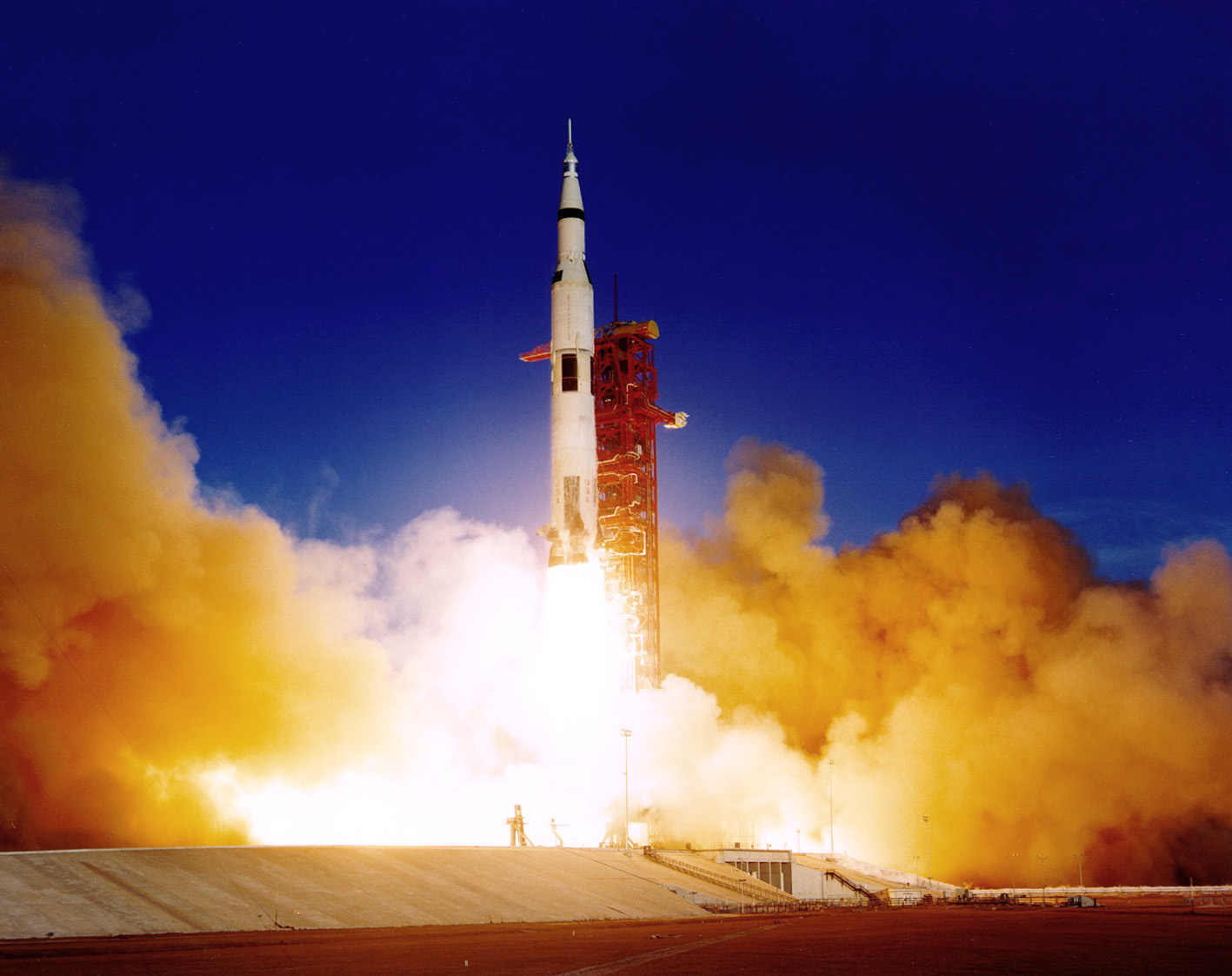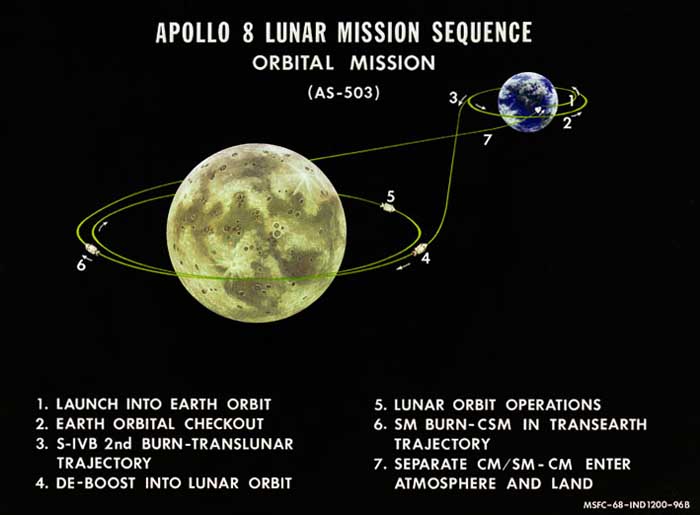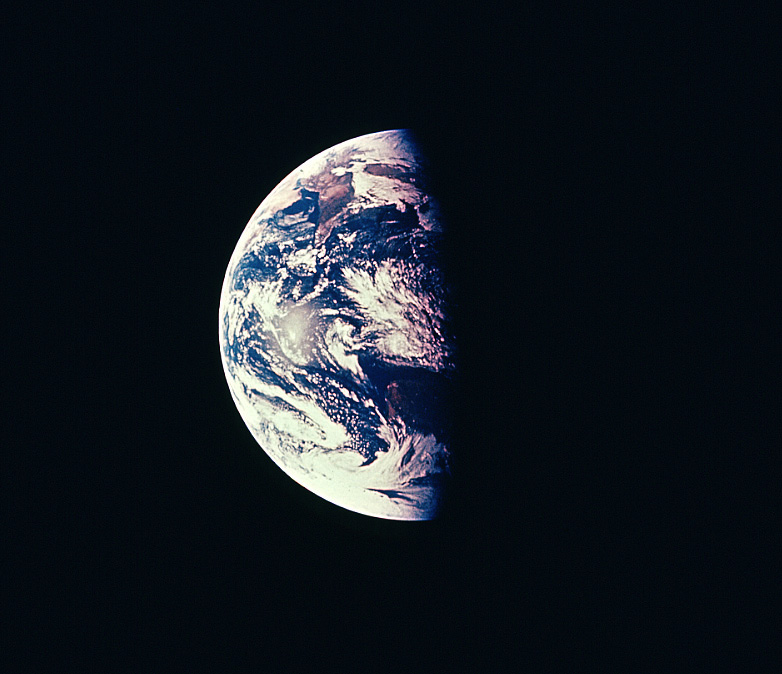Apollo 8 Launched 1st Astronauts Around the Moon 50 Years Ago Today Despite Big Risks
There's a fine line between daring and reckless, and in hindsight, it might be argued that NASA perhaps fell on the wrong side of that line 50 years ago today with the launch of Apollo 8 — but the agency was lucky and confident in its calculations, and the trio of astronauts sent on a historic mission full of gambles survived the journey unscathed.
On Dec. 21, 1968, just before 5 a.m. local time, James Lovell, William Anders and Frank Borman had no way of knowing that when they piled into their capsule tucked atop a Saturn V rocket on a Florida launchpad. Three hours later, they would be on their way to space and to becoming the first three humans to fly around the moon.
"Apollo 8 is my favorite mission of all time," Jerry Bostick, who worked at mission control for the flight, told Space.com. "I have a special affinity for it because of my early involvement in it, but it was also a very daring and bold thing to do, and that added to the excitement." [Apollo 8: NASA's First Crewed Trip Around the Moon in Pictures]
Bostick was brought on to the mission before it was publicly announced and was told he couldn't tell anyone what he was working on. He and his colleagues were given just a weekend to determine whether it was possible to redirect Apollo 8 — originally a practice run for atmospheric re-entry — into a journey around the moon, with just months to prepare.
The rush triggered additional risk-taking. When the Apollo 8 mission was redesigned, no mission control room was ready, no trajectories had been calculated for a lunar flight, no astronauts had been trained for it and there was no procedure for fetching returning astronauts on landing, current NASA Administrator Jim Bridenstine recounted in a new video released by the agency. The only engine the crew could rely on during flight for the multiple course-correction burns the path required had never re-ignited in flight. Apollo 8 would be Saturn V's first voyage with humans aboard, and only its third flight ever — and it failed during the second uncrewed flight.
In the scurry that ensued, perhaps it's not surprising that Lovell told Space.com that his destination never really sank in until he climbed into the crew capsule that morning. But there he was, on the launchpad on Dec. 21, 1968. Less than 3 hours after launch, the crew was conducting the first in a series of maneuvers that would send them flying around the moon.
And just like that, humans, who had never yet been more than 850 miles (1,370 kilometers) away from the planet, would jump directly to flying 240,000 miles (390,000 km) to the moon. "Going into orbit around the moon is like driving your hot rod to try to beat the train to the railroad crossing," Anders said in a 2012 statement. "It's going through, God knows, how many thousands of miles an hour around the Earth, and we scoot right in front of it and slow down and go into orbit, [a] pretty dynamic maneuver."
Breaking space news, the latest updates on rocket launches, skywatching events and more!
In terms of spaceflight, Apollo 8 had already become a historic mission — but it didn't leave its mark on the zeitgeist until Dec. 24. The astronauts caught their first glimpse of the gemlike Earth behind the grayish lunar surface — an image Anders would capture in a photograph dubbed "Earthrise." And as Earthlings prepared to celebrate Christmas, the crew read a passage from the beginning of the Bible, in which God creates the Earth. The broadcast was watched live by a billion people around the world — more than a quarter of Earth's population at the time.
Neither event was in mission control's plan for the flight. "I don't think anybody on the control center had any idea that they were going to read from the book of Genesis," Bostick told Space.com. "And for that to occur on Christmas Eve, with Americans circling the moon, it was just overwhelming. It brought tears to everybody's eyes. How much better can it get than this?" [Building Apollo: Photos from Moonshot History]
All told, the crew circled the moon 10 times, photographing potential landing sites for the astronauts who would follow them. And three days later, their capsule splashed down in the Pacific Ocean. There were no serious anomalies at any point in the weeklong mission.
But in the decades that have followed, Apollo 8 has faded in the minds of many. "Apollo 8 is kind of overlooked," Rushmore DeNooyer, a filmmaker whose documentary on the mission will air on PBS on Dec. 26, told Space.com. "Really, 8 made it possible to land on the moon on Apollo 11. That was really only about six or seven months after Apollo 8, and 8 really showed them that they could do it."
And he said that for Americans at the time, the success came at a critical moment when the country was struggling with assassinations, war and culture clashes. "1968 was such a terrible year in America, and so many things were going so wrong, and then this wonderful moment at the very end of the year, the last week of 1968 and Apollo 8 came along," deNooyer said. "Someone sent a telegram to NASA, 'Thank you for saving 1968.'"
For Bostick, it's really that triumph of teamwork and hard work that characterizes Apollo 8. "Sometimes you have to be bold to achieve difficult goals," he said. "I think the real legacy of Apollo 8 is you can do very difficult things if you just put your mind to it."
Email Meghan Bartels at mbartels@space.com or follow her @meghanbartels. Follow us @Spacedotcom and Facebook. Original article on Space.com.

Meghan is a senior writer at Space.com and has more than five years' experience as a science journalist based in New York City. She joined Space.com in July 2018, with previous writing published in outlets including Newsweek and Audubon. Meghan earned an MA in science journalism from New York University and a BA in classics from Georgetown University, and in her free time she enjoys reading and visiting museums. Follow her on Twitter at @meghanbartels.





